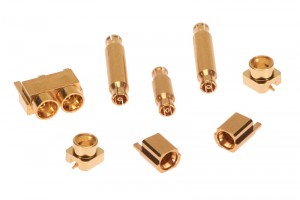Big Growth Trend for Small Connectors
They may be small in scale, but use of micro connectors is growing fast—including subminiature, microminiature, and ultra-microminiature versions. Several key markets are driving this growth trend, including mobile technology, aerospace and defense (A&D), and medical.
As you can see from the many cell phone commercials on TV, the mobile phone market is booming. All of these phones as well as other handheld devices require smaller and lower-profile components, including micro connectors capable of very high data speeds. For example, 10 Gbps board-to-board connectors are common, and some advanced miniature board-to-board connectors can handle up to 20 Gbps.
The connectors used in these applications are extremely small. For example, Molex offers board-to-board connectors as small as 0.35mm pitch and flexible printed circuit (FPC) connectors as small as 0.20mm pitch.
Micro connectors for cell phones and other applications must also be user-friendly. For example, Molex added metal cover nails on some board-to-board connectors to protect the connector housing wall by making it stronger and less prone to breakage during assembly. Also, micro connectors with more-generous lead-in alignment help assembly technicians find the “sweet spot” when mating connectors.
A&D is another important market, using products such as lightweight, high-frequency RF micro connectors. For example, subminiature push-on (SMP) connectors, with a maximum frequency of 26 GHz; and subminiature push-on micro (SMPM) connectors, with a maximum frequency of 40 GHz, are widely used in board-to-board and cable-to-board applications. SMPM connectors are 30 percent smaller than SMP connectors.

A&D applications include ground-based radar and aircraft communications systems. Also, RF connectors are effective in low-power settings while offering low signal-to-noise ratios, and are capable of transmitting complex signals.
In the medical market, micro connectors are used in devices such as scopes and probes. These connectors must be non-magnetic, which requires replacing the nickel plating traditionally used in connectors with electroless nickel phosphorous. Other applications include medical devices such as MRI machines and CAT scanners, but these devices typically utilize larger connectors.
While designing and assembling devices containing micro connectors can be challenging, assembly know-how is available to make this process easier. As devices continue to shrink, designers need to embrace—and take advantage of—today’s micro connector technology.